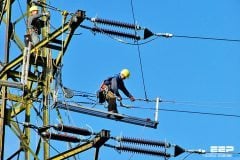Load Details
The most vital, but often the last to be acquired, pieces of information for power system design are the load details.
An important concept in load planning is that due to non-coincident timing, some equipment operating at less than rated load, and some equipment operating intermittently rather than continuously, the total demand upon the power source is always less than the total connected load. This concept is known as load diversity.

The following eight standard, but important definitions are tools to quantify it:
1. Demand
The electric load at the receiving terminals averaged over a specified demand interval. of time, usually 15 min., 30 min., or 1 hour based upon the particular utility’s demand interval.
2. Demand Interval
The period over which the load is averaged, usually 15 min., 30 min., or 1 hour.
3. Peak Load
The maximum load consumed or produced by a group of units in a stated period of time. It may be the maximum instantaneous load or the maximum average load over a designated period of time.
4. Maximum Demand
The greatest of all demands that have occurred during a specified period of time such as one-quarter, one-half, or one hour. For utility billing purposes the period of time is generally one month.
5. Coincident Demand
Any demand that occurs simultaneously with any other demand.
6. Demand Factor
The ratio of the maximum coincident demand of a system, or part of a system, to the total connected load of the system, or part of the system, under consideration, i.e.
![]()
7. Diversity Factor
The ratio of the sum of the individual maximum demands of the various subdivisions of a system to the maximum demand of the whole system, i.e.,

where:
Di = Maximum demand of load i, regardless of time of occurrence.
DG = Coincident maximum demand of the group of n loads.
The relationship between the diversity factor and the demand factor is:

where:
TCLi = Total connected load of load group i
DFi = The demand factor of load group i
8. Load Factor
The ratio of the average load over a designated period of time to the peak load occurring in that period, i.e.:

If T is the designated period of time, an alternate formula for the load factor may be obtained by manipulating previous formula as follows:

These quantities must be used with each type of load to develop a realistic picture of the actual load requirements if the economical sizing of equipment is to be achieved. Further, they are important to the utility rate structure (and thus the utility bill).
The following must be taken into account in this process:
- Load Development/Build-Up Schedule – Peak load requirements, temporary/construction power requirements, and timing
- Load Profile – Load magnitude and power factor variations expected during low-load, average load, and peak load conditions
- Expected Daily and Annual Load Factor
- Large motor starting requirements
- Special or unusual loads such as resistance welding, arc welding, induction melting, induction heating, etc.
- Harmonic-generating loads such as variable-frequency drives, arc discharge lighting, etc.
- Forecasted load growth over time
Individual engineering experience on previous projects are both useful in determining demand factors for different types of loads. In addition, the National Electrical Code gives minimum requirements for the computation of branch circuit, feeder, and service loads.
Reference: Load Planning – Bill Brown, P.E., Square D Engineering Services










